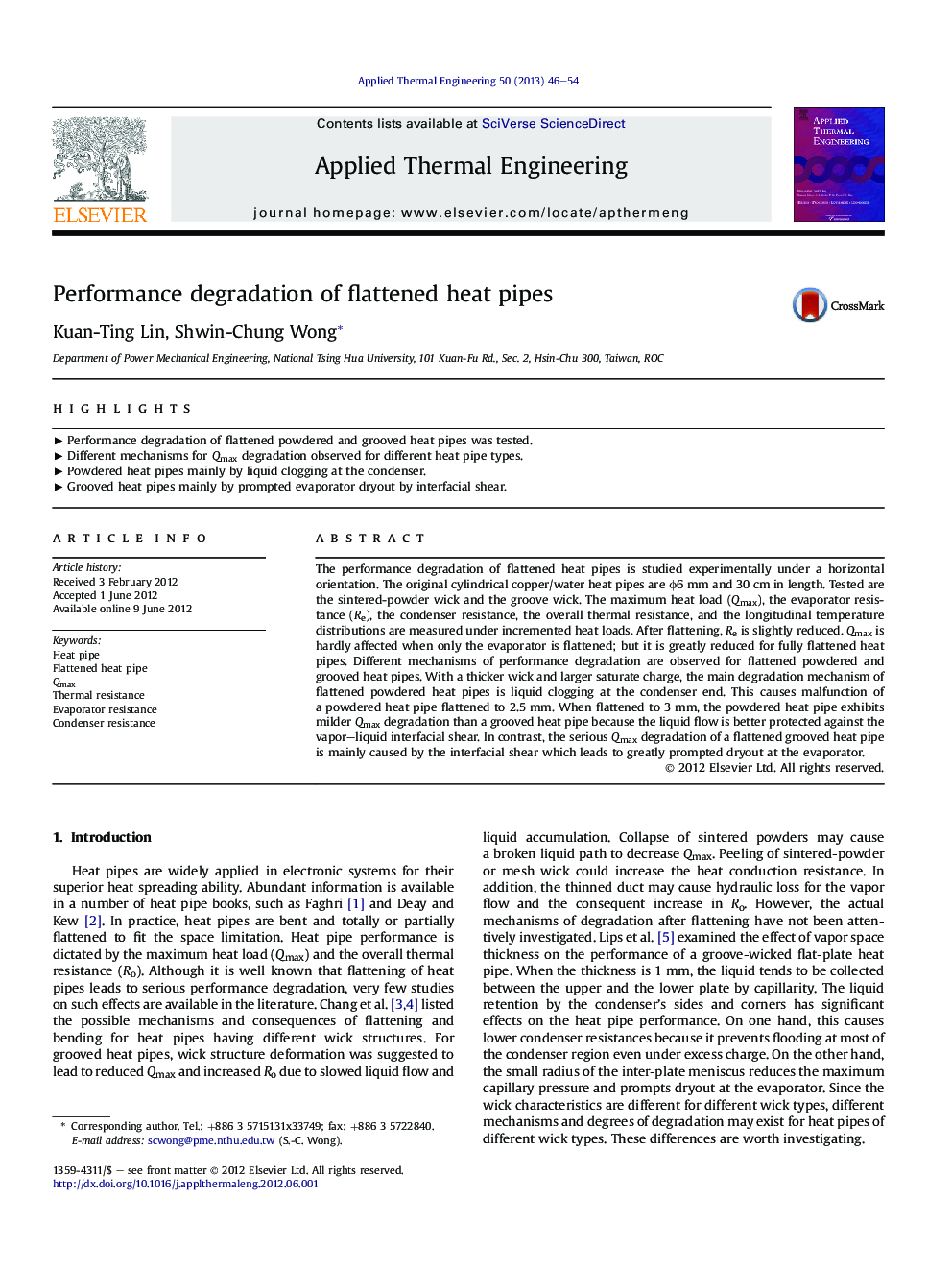| کد مقاله | کد نشریه | سال انتشار | مقاله انگلیسی | نسخه تمام متن |
|---|---|---|---|---|
| 647215 | 884588 | 2013 | 9 صفحه PDF | دانلود رایگان |

The performance degradation of flattened heat pipes is studied experimentally under a horizontal orientation. The original cylindrical copper/water heat pipes are ϕ6 mm and 30 cm in length. Tested are the sintered-powder wick and the groove wick. The maximum heat load (Qmax), the evaporator resistance (Re), the condenser resistance, the overall thermal resistance, and the longitudinal temperature distributions are measured under incremented heat loads. After flattening, Re is slightly reduced. Qmax is hardly affected when only the evaporator is flattened; but it is greatly reduced for fully flattened heat pipes. Different mechanisms of performance degradation are observed for flattened powdered and grooved heat pipes. With a thicker wick and larger saturate charge, the main degradation mechanism of flattened powdered heat pipes is liquid clogging at the condenser end. This causes malfunction of a powdered heat pipe flattened to 2.5 mm. When flattened to 3 mm, the powdered heat pipe exhibits milder Qmax degradation than a grooved heat pipe because the liquid flow is better protected against the vapor–liquid interfacial shear. In contrast, the serious Qmax degradation of a flattened grooved heat pipe is mainly caused by the interfacial shear which leads to greatly prompted dryout at the evaporator.
► Performance degradation of flattened powdered and grooved heat pipes was tested.
► Different mechanisms for Qmax degradation observed for different heat pipe types.
► Powdered heat pipes mainly by liquid clogging at the condenser.
► Grooved heat pipes mainly by prompted evaporator dryout by interfacial shear.
Journal: Applied Thermal Engineering - Volume 50, Issue 1, 10 January 2013, Pages 46–54